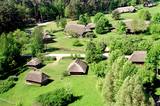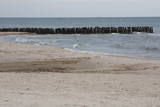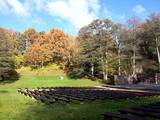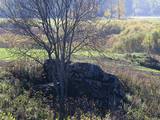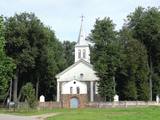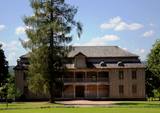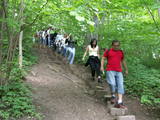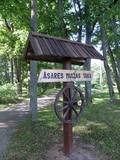| Nr | Name | Beschreibung |
|---|---|---|
|
Ein Freilichtmuseum des Landlebens. Gebäude aus den verschieden historischen Gebieten, Wirtschaftsartikel und Haushaltsgegenstände, Traditionen u.a. |
||
|
Eine kleine Bäckerei, die Jānis Kurpnieks, ein Bäcker mit mehr als 20 Jahren Erfahrung, im Haus seines Vaters eingerichtet hat. Mehr als 12 Brotsorten aus Getreide aus Lettland. Der größte Stolz der Bäckerei sind das Vollkornroggenbrot und das süß–saure Brot, die kein Weizenmehl enthalten. Roggenbrot wird in großen 8 bis 9 kg schweren Laiben gebacken, die eine Länge von bis zu einem halben Meter erreichen. In einem solchen Laib ist der Brotgeschmack stärker und die Haltbarkeit – länger. Zum Backen von Brot werden nur natürliche Zutaten und selbstgemachter Sauerteig verwendet, der aus den Teigresten des letzten Backens gewonnen wird. Der Teig wird in Backtrögen aus Eichenholz reifen gelassen und das Brot wird in einem echten Brotofen gebacken, der mit Nadelholzbrennholz geheizt wird. |
||
|
Die Meeresenge von Irbe ist sehr wichtig während der Vogelmigration. Von den geschützten Vogelarten begegnet man hier am meisten der Samtente, der Trauerente, der Eisente, der Zwergmöwe, dem Sterntaucher und dem Prachttaucher, sowie auch der Teiste. Das Gebiet befindet sich gegenüber der Regionen Dundaga und Ventspils. Die Fläche beträgt 172 412 ha.
|
||
|
The tower is in the western part of the Vasenieki swamp, and an interesting nature trail with information stands and pathways was recently established there. The tower offers a look at unique swampland – visitors can survey the entire swamp. Wear proper footwear when it is damp outside!
|
||
|
features an open-air stage in a lovely place. During the summer there are concerts, theatrical performances, parties, Summer Solstice celebrations, etc. The International Bourdon Festival is held once every four years, and the next one will be in 2020. This brings together bourdon singers from many countries in the world. |
||
|
The Līgatne Paper Factory is located at Pilsoņu Street 1 in Līgatne. The factory was first built in place of an old paper windmill by two tradesman from Rīga who also built dormitories for residents. These structures are an important component in the urban environment of Līgatne. The rapid flow of the Līgatne River allowed the factory to produce writing paper, stationary and wrapping paper. In 1858, the factory was brought by a local nobleman who brought in new equipment from Scotland. If some 100 people worked at the factory during the first half of the 19th century, then that number rose to 600 by the end of the century and 800 at the beginning of the 20th century. Writing paper was the primary product from the factory, although there were sometimes special orders. During World War I, for instance, the factory produced paper on which the Russian military printed its maps. This allowed the factory to hold an important role in the Russian market. During the Soviet era, the factory at Līgatne produced notebooks and other products that were sent all over the USSR. Today the factory mostly produces wrapping paper of various kinds from waste paper. The Līgatne Paper Factory is the only functioning entity of its kind in Latvia, and there are guides available to give you a tour. The historical centre of the campus on which the factory sits is a cultural monument. The Līgatne Tourism Information Centre (_371-6415-3313) offers tours of the centre during which you will learn about the lives of the factory's workers and administrators in the late 19th and early 20th century. Back then there was major construction work at the factory to build residences for workers, a school, a childbirth facility, a hospital, a club, a guesthouse and other buildings which have survived to the present day. |
||
|
The Boulder of Purmaļi is the biggest boulder in Rēzekne district and one of the 20 biggest boulders in
Latvia. It is located on the escarpment surrounded by the trees and the bushes. Perimeter 18,5 m, height 3,2 m,
lenght 5,6 m, width 4,7, surface volume 30 m3.
|
||
|
Das Gästehaus befindet sich an der Umleitung von Rezekne (A12). Die Wirtin bereitet Speisen der Region Latgale vor, indem sie lokale Produkte verwendet. Sie arbeitet mit lokalen Bauern und Fischern zusammen. Lettische Küche: Bauernfrühstück, Roggenbrot in Schichten mit Hering, Roggenbrotscheibe mit Sprotten, Kartoffeln mit Pfifferlingsoße, Heidelbeersuppe mit Klößen, gebackene Äpfel, Dessert aus Rhabarbern. Das besondere Gericht: Hecht mit geräucherter Brust in grüner Soße. |
||
|
Sts. Peter and Paul Roman Catholic Church of Ozolmuiža was built in 1820 by the foundation of
counts Plāteri-Zībergi. It is a stone building with a small bell tower. The church has a huge stone altar with
four columns and a massive cross. It is a monument of state importance.
|
||
|
Von dem Flughafen Riga führt die Tour gleich auf dem Land zu dem Landgut Jaunmokas, das von einem schönen Park umgeben ist. Am nächsten Tag fängt die Vogelbeobachtung im Nationalpark Kemeri an, wo wir uns auf feuchten Waldgebieten und in die Umgebung des Sees Kanieris begeben, sowie das Dorf Kemeri besichtigen. Weiter führt die Tour Richtung der westlichen Küste der Rigaer Bucht, auf dem Weg halten wir und machen längere Spaziergänge in Mersrags. Als Nächstes verbringen wir einige Zeit am Kap von Kolka und in seiner Umgebung, die ein wichtiger Ort für Migration von Vögeln ist. Wir besuchen die breitblättrigen Wälder des Nationalparks Slitere, die sich auf dem ehemaligen Ufer des Baltischen Eisstausees befinden, und fahren durch die Überschwemmungsgebiete von Uzava, und danach halten wir an dem westlichsten Punkt des Landes – in Akmenrags. Weiter führt die Tour nach Liepaja und zu der Vogelwarte und dem See von Pape, wo es möglich ist, eine Nacht zu verbringen und die Migration von Eulen zu beobachten, wenn sie begonnen hat. Weiter fahren wir durch das Waldgebiet von Zvarde und auf dem Weg nach Riga halten wir an einigen Fischteichen. |
||
|
Das Schloss in Kurtuvėnai ist von einem alten, teils geometrisch angelegten, teils naturnah belassenen Landschaftspark umgeben. In der 2. Hälfte des 19. Jh. war er als naturnaher Landschaftspark ausgeführt mit nur einigen geometrischen Elementen. In dem 4,2 Hektar großen Park grünen noch immer alte Linden, Ahorne, Eschen, Eichen und andere dekorative Bäume und Sträucher, insgesamt mehr als 20 Arten Bäume und Sträucher |
||
|
Das litauische Institut für Obst- und Gartenbau erhielt 1992 den Status eines staatlichen Wissenschaftsinstituts. Es ist nicht nur wissenschaftlich tätig, sondern auch als Züchter und Entwickler. Das Institut baut litauisches Obst und Gemüse an und erzeugt daraus hochwertige, gesunde und natürliche Produkte. |
||
|
In Mērsrags befindete sich der Grenzwacheposten der UdSSR. Hinten dem Posten beginnt die Grenzzone des Küstenregimes. Heutzutage ist von dem erwähnten Posten nichts mehr erhalten geblieben.
|
||
|
Eine der ältesten Universitäten Nordeuropas, gegründet 1632. An der Universität haben Jungletten und in der Welt bekannte Wissenschaftler studiert. Das Hauptgebäude (1804 – 1809) mit einer Aula ist eins der hervorragenden Denkmäler der klassischen Architektur im Staat. |
||
|
1253 erbaute der Livonische Orden aus Backsteinen und gehauenen Feldsteinen ein Vogtschloss, ein 70m x 40m großes Bauwerk, mit einem dreistöckigen Wohntrakt und einem Turm mit Toren in der Mitte. Im 14.Jh. erbaute man um die Festungsmauer auf der Höhe des 2. Stockwerks entlang der Schießscharten einen Kriegergang, im 16. und 17. Jh. wurden daneben Wälle aufgeschüttet und vier Bastionen errichtet. Die Legende berichtet von einer in der Wand eingemauerten Ritterstochter und einem unterirdischen Geheimgang zur 200m entfernten lutherischen Kirche. Am Park entlang führt eine Promenade mit Namen „Senais jūras krasts“ (altes Meerufer). Hier gibt es auch eine Gedenktafel mit Zitaten der lettischen Dichter Zenta Mauria und Rainis. |
||
|
Es ist ein Ort, wo man kurze und lange Spaziergänge machen kann. Hier ist der 1,6 km lange Pfad von Sprīdītis (mit Holzskulpturen der Helden aus den Märchen der Schriftstellerin Anna Brigadere), der 3,8 km lange Waldlehrpfad und der 8 km (eine Richtung) lange Landschaftspfad von Augšzeme. Alle Pfade befinden sich in einer subglazialen Bettung, wo sich einer nach dem anderen kleine Seen und Sümpfe befinden, die mit Durchflüssen verbunden sind. Zum Schutz der Landschaft und anderer Werte ist hier ein Naturschutzgebiet eingerichtet worden. An der Stelle, wo die Pfade anfangen (unweit von Pilskalne), ist der ungefähr 30 Meter hohe Hügel Melnaiskalns (Schwarzberg oder der Burgberg von Rāmava) zu besichtigen. |
||
|
Asares muižas romantiskā stila dendroloģiskais ainavu parks veidots 18. gs. un papildināts 19. gs. 2. pusē. Muižas parka teritoriju ieskauj laukakmeņu mūris. Bet parkā sastopamas daudz interesantas krūmu un koku sugas: Sibīrijas baltegles, Eiropas lapegles, duglāzijas, šķeltlapainie baltalkšņi, Švedlera kļavas, košumkrūmi, dažādi lakstaugi. Liepu alejā - 2 dižkoki. Tempļa kalna atjaunotajā lapenē - muižnieku tējas dzeršanas vieta ar skatu uz pili. |
||
|
1996. g. atklātais piemineklis (tēlniece: A. Veinbaha) Dagdā (starp Asūnes un Rēzeknes ielām) ir piemiņas vieta komunisma terora upuriem. No šejienes paveras labs skats uz salām bagāto Dagdas ezeru. |
||
|
Ebenso kann man den Stolz des Hofe besichtigen, den Keller mit einer großen Kollektion im Hof erzeugter Weine. Im Hof kann man neben Wein auch diverse Obstweine aus Apfel, Kirsche, Schwarzer Johannisbeere, Moosbeeren, Rhabarber oder Stachelbeeren kaufen. |
||
|
Auf dem Hof werden Gemüse, Früchte und Beeren gezüchtet und Milchprodukte und andere Produkte hergestellt. Die Besucher können hier Bio-Produkte kaufen, an Arbeiten auf dem Land und bei der Ernte teilnehmen. In dem kleinen Brothaus kann man Brot backen, Käse machen und hausgemachtes Bier (wenn vorher bestellt) verkosten. Die Wirtin kocht Gerichte der Region Latgale: gefüllte Kartoffelpfannkuchen Gulbešnīki mit Pilzsoße, Zwiebacks, ländliche Blutwurst, Vormilchpudding Tatarvans u.a. Die Gäste können einem Gesang in der lettgallischen Mundart zuhören. |
||
